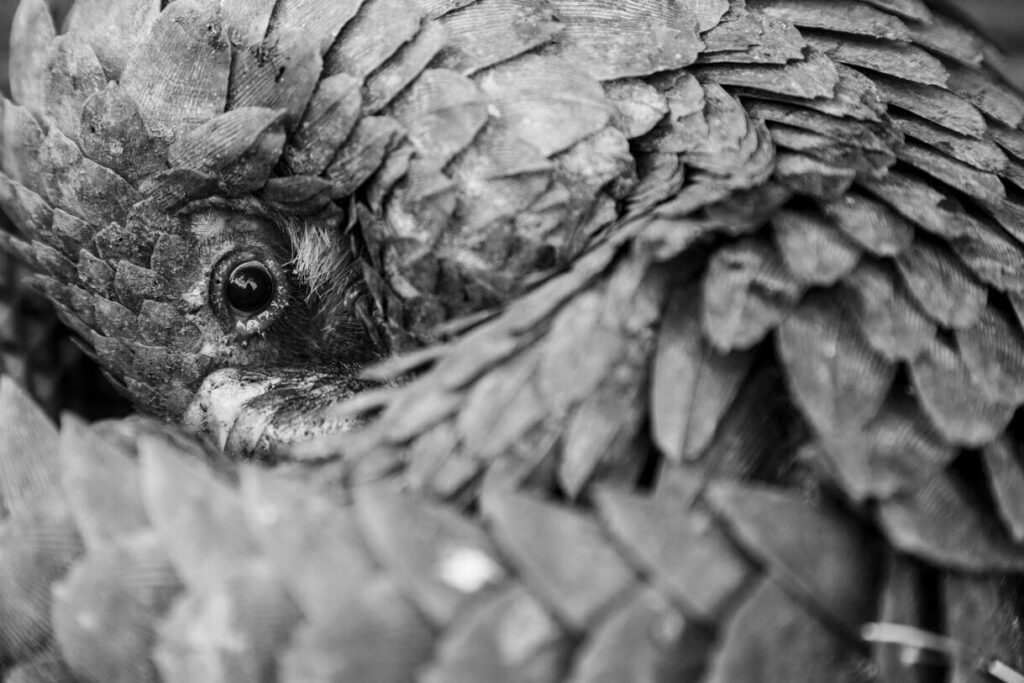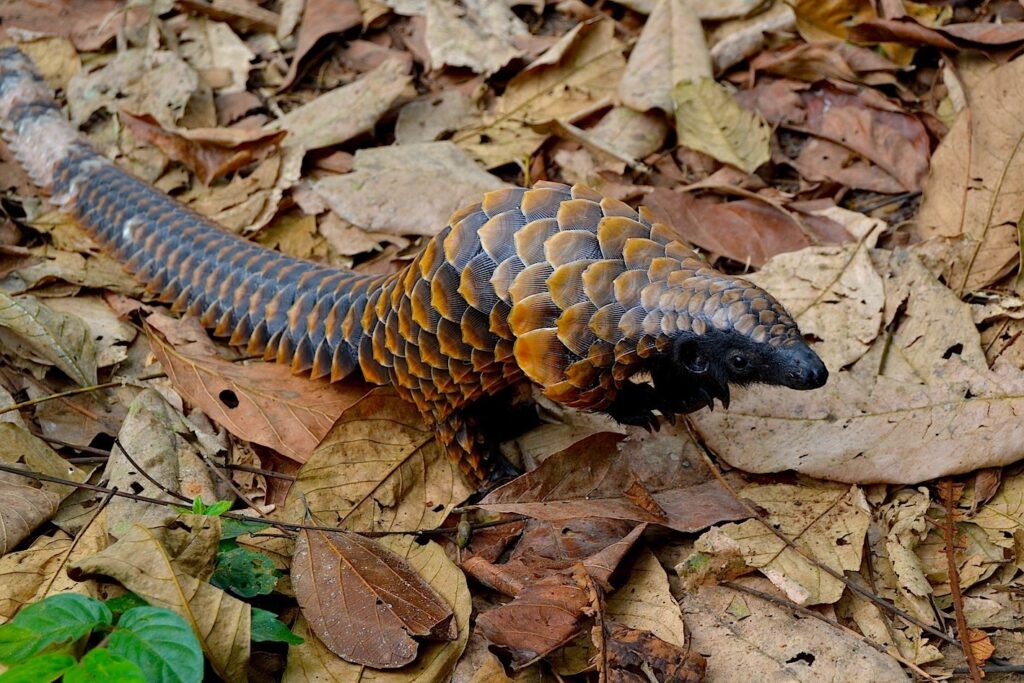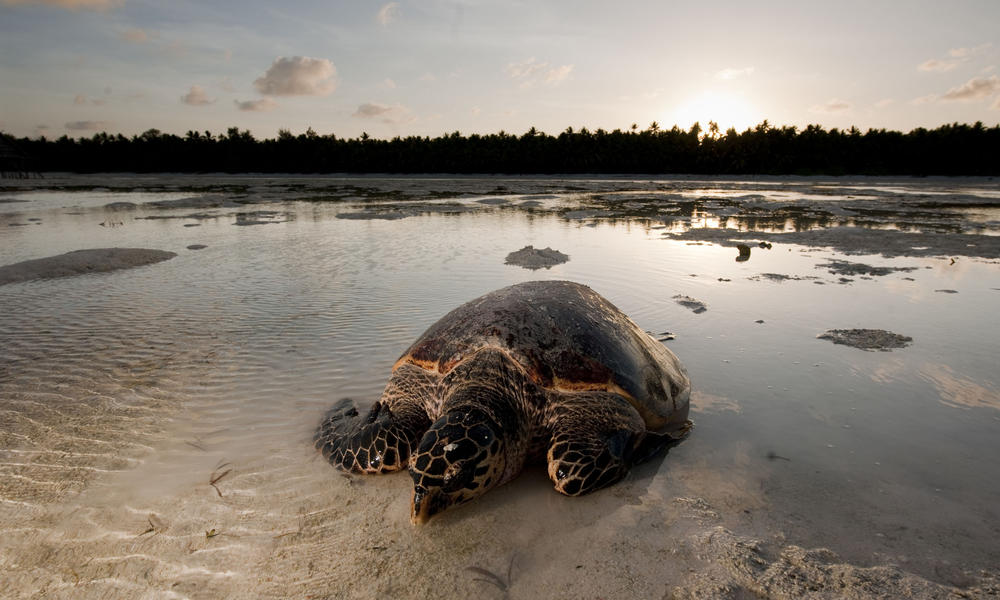Here we hope to bring to light some of the creatures that are in desperate need of our help. Sharing the interesting facts about these animals and the plight that they are currently facing in the wild and naturally help in whatever way we can as a community to ensure their survival.
Why have we chosen these particular species?
These animals are ranked as critically endangered by WWF. By including them here and sharing some of their information, we can make a difference in their struggle for survival.
Pangolin – the venerable ‘wise old man’ of the African bush – is said to be a totem of good luck and the bringer of rain. This enigmatic creature that holds the secrets of 85 million years of evolution is now the most poached mammal on the planet. In partnership with African Pangolin Working Group, find out about the unseen lives of these rare creatures and how you can join us in averting their extinction.
There are four pangolin species in Africa. They are Temminck’s ground Pangolin, Giant ground Pangolin, Black-Bellied Pangolin, and White-bellied Pangolin.

Temminck’s ground pangolin is the most widespread and second-largest of the four African pangolin species, occurring from northern South Africa through most of East Africa and into southern Sudan and southern Chad.
Individuals average 7–12 kg and may reach a length of 1.2 m. Size varies geographically, with smaller animals being found in semi-arid environments and larger animals in moist environments.
This species is entirely terrestrial and prefers savannah and woodland habitats. They are predominantly nocturnal, but this can vary dependent on age and geography. In some regions they may be predominantly diurnal during certain times of the year.
They are classified as Vulnerable on the IUCN Red List, and their population is believed to be decreasing.
Find out more by simply clicking the button below the image.

This is the largest of the African pangolin species, and is also the rarest. It is a nocturnal, terrestrial species, inhabiting forests and forest-savanna mosaics in Central and West Africa, marginally entering East Africa as well.
Adults may attain a length of 1.5 m and weigh up to 33 kg, but individuals of this size are rare. They are listed as Vulnerable on the IUCN Red List, and the population is believed to be declining.

The black-bellied pangolin has large scales which are often a rich ochre colour with dark borders. The skin is black, contrasting with the ochre scales and resulting in this species arguably being the most beautiful pangolin species.
This is the smallest (in body size) of the species of African pangolin, with individuals averaging 85–110 cm in length and weighing up to 3.5 kg (although usually weighing 1–2 kg). The tail can measure up to 60 cm long. It is readily identifiable by its small body size and very long tail. This species is listed as Vulnerable on the IUCN Red List, with a population that is believed to be decreasing.

This small, arboreal species is fairly widespread and is also the species most frequently encountered, but they are by no means common. The body is covered in numerous small scales, with each scale having three projecting points when new (hence the species name ‘tricuspis’). The scales are grey to light brown, and the belly and bare skin is white. Adults are small, averaging 60-105 cm in length, with the tail contributing about half of this length. They have a maximum mass of only 3 kg, although averaging 1–2 kg.
White-bellied pangolins frequently come to ground while foraging or when crossing open patches, but quickly ascend the nearest tree when disturbed. This species is listed as Vulnerable on the IUCN Red List, with a population that is rapidly declining due to its prevalence in domestic and international trade.

Head to the Africa Pangolin Working Group by clicking the contribute button below and make a contribution in help of these amazing gardeners of the wild.
Fewer than 7,000 painted wolves are left across the entire continent.
They may not be as famous as their trunked, horned, or maned neighbours, but these painted wolves —also known as African wild or hunting dogs—are beautiful, unique, and fascinating social animals.
Painted wolves are native to Africa, and aren’t found in the wild anywhere else on the planet. They live in small pockets across a handful of countries including Zimbabwe, the home of Painted Dog Conservation. There are roughly 700 painted dogs here, and we work with local populations of both humans and dogs—via conservation, education, and outreach programs—to help them not only survive here, but thrive.

Head to the Painted Dog Conservation by clicking the contribute button below and make a contribution to help of these Painted Wolves of the Africa.
Hawksbills are named for their narrow, pointed beak. They also have a distinctive pattern of overlapping scales on their shells that form a serrated-look on the edges. These coloured and patterned shells make them highly-valuable and commonly sold as “tortoiseshell” in markets.
Hawksbills are found mainly throughout the world’s tropical oceans, predominantly in coral reefs. They feed mainly on sponges by using their narrow pointed beaks to extract them from crevices on the reef, but also eat sea anemones and jellyfish. Sea turtles are the living representatives of a group of reptiles that has existed on Earth and travelled our seas for the last 100 million years. They are a fundamental link in marine ecosystems and help maintain the health of coral reefs and sea grass beds.

Head to the WWF website by clicking the contribute button below and make a contribution to help of these amazing gardeners of the wild.